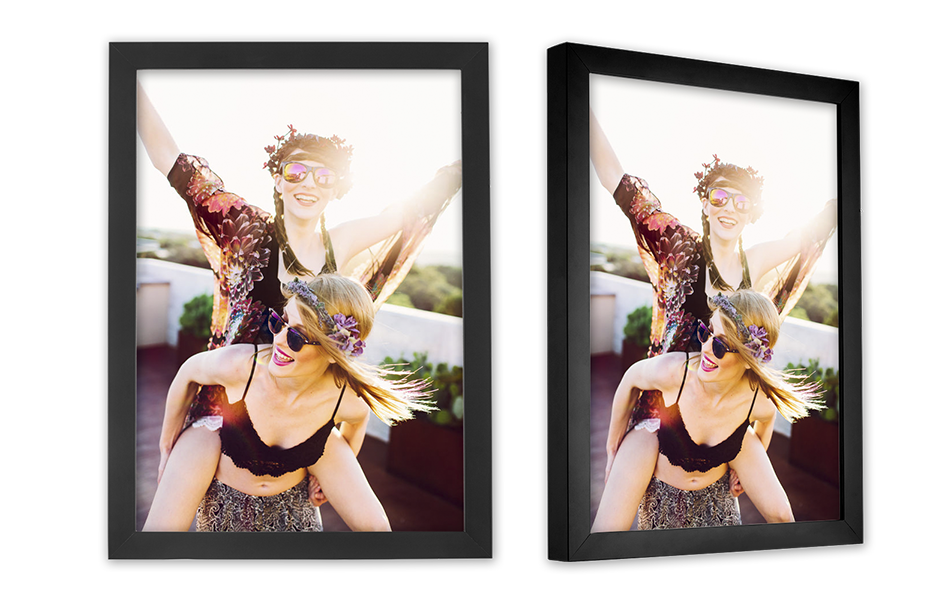Creating Art With Natural Light Photography

 03/30/2025
03/30/2025
by Michael McCarty
Founder, Tribeca Printworks
Photography is an art form that requires patience, technical knowledge and a creative eye to excel in. Understanding how light can affect a photo and using it to your advantage is a skill every photographer should know, as the quality of lighting, whether natural or artificial, significantly impacts the final appearance of an image.
You can master these concepts and bring creative ideas to life by taking natural lighting photos. Natural light is more challenging than artificial light because you must consider multiple factors like time of day, the position of the subject and how the light reflects on surfaces in the surrounding area, which can be unpredictable.
Consider a photo in which the subject is bathed in golden light, with rays of light shining through a window, a treeline or highlighting a subject’s face uniquely. This aesthetic is the result of mastering natural light photography. It can transform an image, convey emotion and make it more dynamic.
What Is Natural Light?
It is important to know the types of natural light to understand what natural light photography is. While you can use any light that emanates from sources without artificial enhancements, like the sun, moon or ambient sources like fireflies, there are a few categories. Review a few types of natural light and popular times to take advantage of them:
- Diffused light: Also called soft light, diffused light is lighting that filters through something, softening and scattering it. For example, sunlight diffuses through curtains, clouds, or thick bushes or trees.
- Direct sunlight: This label describes when there is nothing in between the subject and a beam of the sun, and the light is shining directly onto the subject.
- Twilight: A period before sunrise and after sunset offers partial lighting in the atmosphere from the sun. Twilight comes in three phases — civil, nautical and astronomical.
- Golden hour: Also called the magic hour, this period occurs shortly before sunset or after sunrise when the sun is transitioning higher or lower, and its light is richer and softer than other times of day.
- Blue hour: This time usually occurs within the nautical period of twilight, when the sun is between 6 and 12 degrees below the horizon. Its name comes from the contrast between night and day, giving it cooler colors and soft light.
Advantages of Natural Light in Photography
Natural light in photography plays a significant role in your images’ mood, tone and color temperature. The position of the sun in the sky will determine the softness, brightness and shadows present in your image. The lower it is, the softer the light and shadows, creating a feeling of calm, while in comparison, the bright late morning or early afternoon sun will cast more stark shadows, adding a sense of dramatic contrast to the image.
While natural light allows for more diverse moods, artificial light is useful when you need control and consistency over a period, which is more challenging to get from natural light sources. For example, artificial light is best to use for a family portrait in a studio setting or when inclement weather puts a hold on your golden hour plans.
Techniques for Using Natural Lighting Photography
Understanding how to use times of day to convey specific emotions is a critical technique in utilizing natural lighting. These techniques can help photographers make the most of natural light while it’s available.
Understanding Shadows and Highlights
To understand how to use shadows and highlights to add depth and a dramatic feel, observe natural light throughout the day to see how shadows appear and pay attention to the direction, size and depth of the shadow’s color. You’ll also see how effectively you’re highlighting your subject and the details you’re getting from your camera settings. If they look overexposed, you can find a new angle or adjust the exposure settings to bring down the contrast.
Backlighting and Silhouettes
Sometimes, you won’t want to have high detail in your subject, as their features aren’t the photo’s focal point. To create interesting glowing effects, use backlighting, which positions the subject against the light source and creates silhouettes that evoke a sense of mystery and drama.
Reflectors
Often seen in outside shoots, reflectors are excellent at exerting a level of control over your natural lighting as they will reflect light to where you point it, so using them to fill in an unwanted silhouette and lighting your subject from different angles helps fill in details and provides contrast.
Using Diffused Light
Diffused light is a photographer’s best friend as it helps in reducing harsh shadows. For example, overcast skies diffuse sunlight, allowing you to shoot even when the sun is highest without the challenge of overexposure. When shooting under blue skies and struggling with shadows and exposure, try to put your subject in a shady place or use a reflector to diffuse light.
Exploring Natural Light Photography Indoors
If you don’t have reflectors or a camera with the latest features, use your environment to your advantage. Try doing indoor shoots, using curtains and windows to provide directional lighting, which are excellent ways to soften and diffuse light naturally for a portrait or a still-life image.
Overcoming the Challenges of Natural Light
We understand how to overcome overexposure, shadows and bright light, but what about shooting in low light? To compensate for this, you can increase your ISO settings, which helps your camera sensitivity to light. Using wider apertures and slower shutter speeds will also maximize the available light you have.
If you come home and feel you still didn’t get the images you want, then this is an excellent opportunity to sharpen your editing skills. You can use editing to:
- Enhance colors and tones.
- Adjust exposure, contrast and white balance.
- Add warmth or coolness to achieve the right mood.
Inspirational Examples of Natural Light Photography
To show you what natural light is and can do, take a look at the following examples:
- Afghan Girl by Steve McCurry: This famous photo is an excellent use of diffused light and color. His other portraits also show how effective natural lighting can be.
- Ansel Adams landscapes: These landscapes showcase a mastery of the dramatic difference the right contrast can make between light and shadow.
Print Your Natural Light Masterpieces with Tribeca Printworks
Whether you are just beginning and wondering what natural lighting is in photography or you’re a professional photographer, preserving your images through printing is an excellent way to keep your motivation high and decorate spaces with the art you’ve created.
At Tribeca Printworks, we make your images eye-catching and provide complete customization through our range of printing services, including HD aluminum and fine art and canvas giclee printing.

